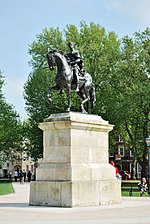Mayflower (tugboat)
1861 shipsBristol Industrial MuseumMuseum ships in the United KingdomShips and vessels of the National Historic FleetSteam tugs ... and 2 more
Tugboats of the United KingdomUse British English from February 2023

Mayflower is a steam tug built in Bristol in 1861 and now preserved by Bristol Museums Galleries & Archives. She is based in Bristol Harbour at M Shed (formerly Bristol Industrial Museum). She is the oldest Bristol-built ship afloat, and is believed to be the oldest surviving tug in the world.
Excerpt from the Wikipedia article Mayflower (tugboat) (License: CC BY-SA 3.0, Authors, Images).Mayflower (tugboat)
Redcliffe Wharf, Bristol Redcliffe
Geographical coordinates (GPS) Address Nearby Places Show on map
Geographical coordinates (GPS)
| Latitude | Longitude |
|---|---|
| N 51.449 ° | E -2.592 ° |
Address
Redcliffe Wharf
Redcliffe Wharf
BS1 6SR Bristol, Redcliffe
England, United Kingdom
Open on Google Maps









